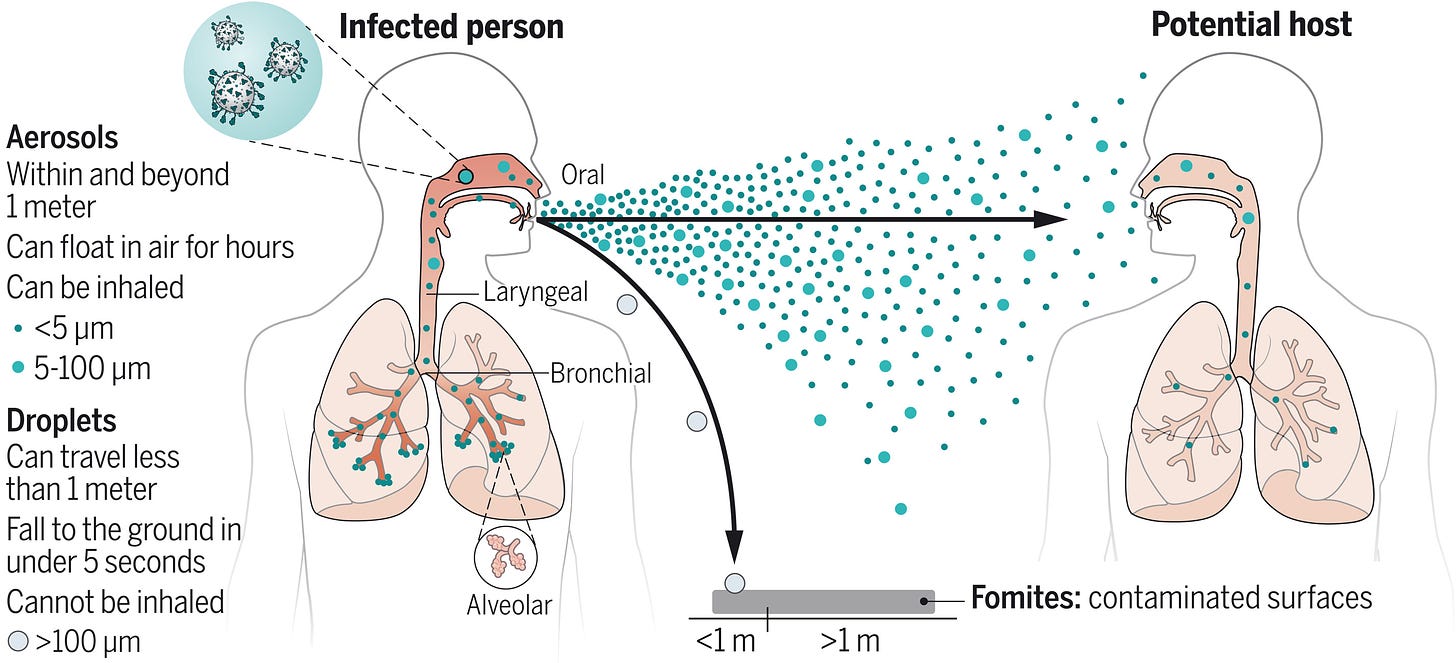Evidence for airborne spread of Covid-19 is strong, but authorities underemphasize airborne protections. The curious history of infectious disease reveals how this anti-airborne bias emerged.
The evidence is strong that Covid spreads through the air, but neither the CDC nor the WHO will explicitly say so.
The evidence that Covid-19 spreads through the air has been there since early in the pandemic - in a Seattle choir, a Chinese restaurant, an Arkansas prison. And “Covid is Airborne” scientists have from around the globe who specialize in airborne contaminants have been pleading with authorities to tell the world, holding symposiums and writing editorial after editorial.
Virus-laden aerosols (<100 I1/4m) are first generated by an infected individual through expiratory activities, through which they are exhaled and transported in the environment. They may be inhaled by a potential host to initiate a new infection, provided that they remain infectious. In contrast to droplets (>100 I1/4m), aerosols can linger in air for hours and travel beyond 1 to 2 m from the infected individual who exhales them, causing new infections at both short and long ranges. CREDIT: N. CARY/SCIENCE
These aerosol experts have published studies on mask efficacy, how droplets of various sizes behave, and how air cleaners could trap the respiratory aerosols . They wrote an open letter in June of 2020 signed by hundreds of fellow scientists appealing to “national and international bodies to recognize the potential for airborne spread” of COVID-19. They have shown that 85% of viral load is in the air. They have explicitly laid out how respiratory viruses hitchhike on aerosols to penetrate the lungs and infect people.
And yet despite all this, and even as the Delta wave - as contagious as (the known-to-be-airborne) chickenpox - rages, there has been no clear guidance from the most prominent public health authorities that Covid is indeed airborne, in plain language that regular people and businesses can use to modify their own behavior and prevent airborne transmission.
Why can’t they just say “Covid is Airborne?”
The basic answer is simple: the reason authorities aren’t saying that Covid is Airborne is there is a strong bias against believing it to be true. That is, the public health and epidemiological literature almost uniformly says that airborne transmission is rare, so it’s very hard to believe that it’s actually happening at scale.
KEEP READING - the good stuff is coming



No comments:
Post a Comment